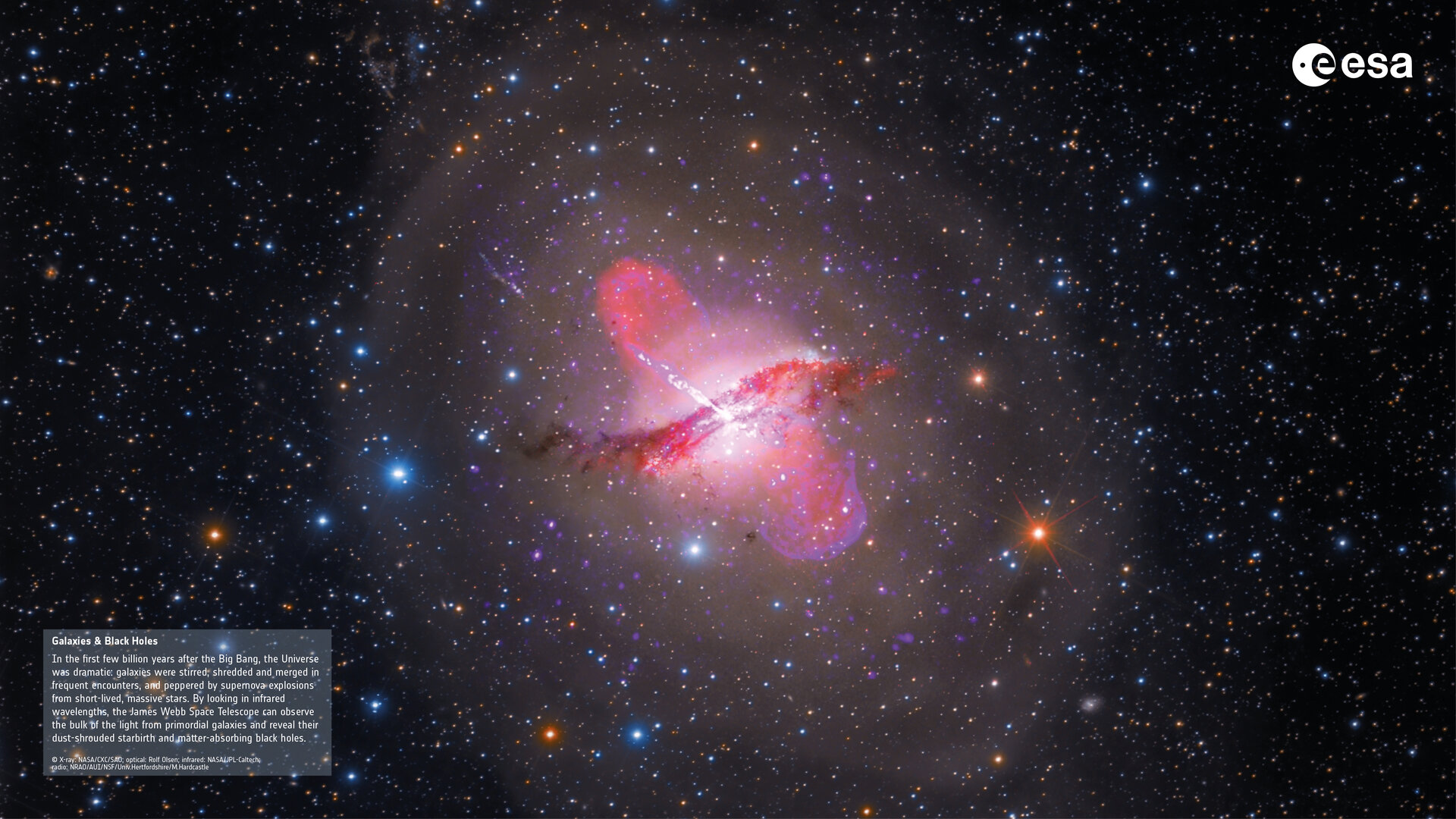

Agency
Galaxies and black holes
Galaxies and black holes
In the first few billion years after the Big Bang, the Universe was dramatic: galaxies were stirred, shredded and merged in frequent encounters, and peppered by supernova explosions from short-lived, massive stars. By looking in infrared wavelengths, the James Webb Space Telescope can observe the bulk of the light from primordial galaxies and reveal their dust-shrouded starbirth and matter-absorbing black holes.





